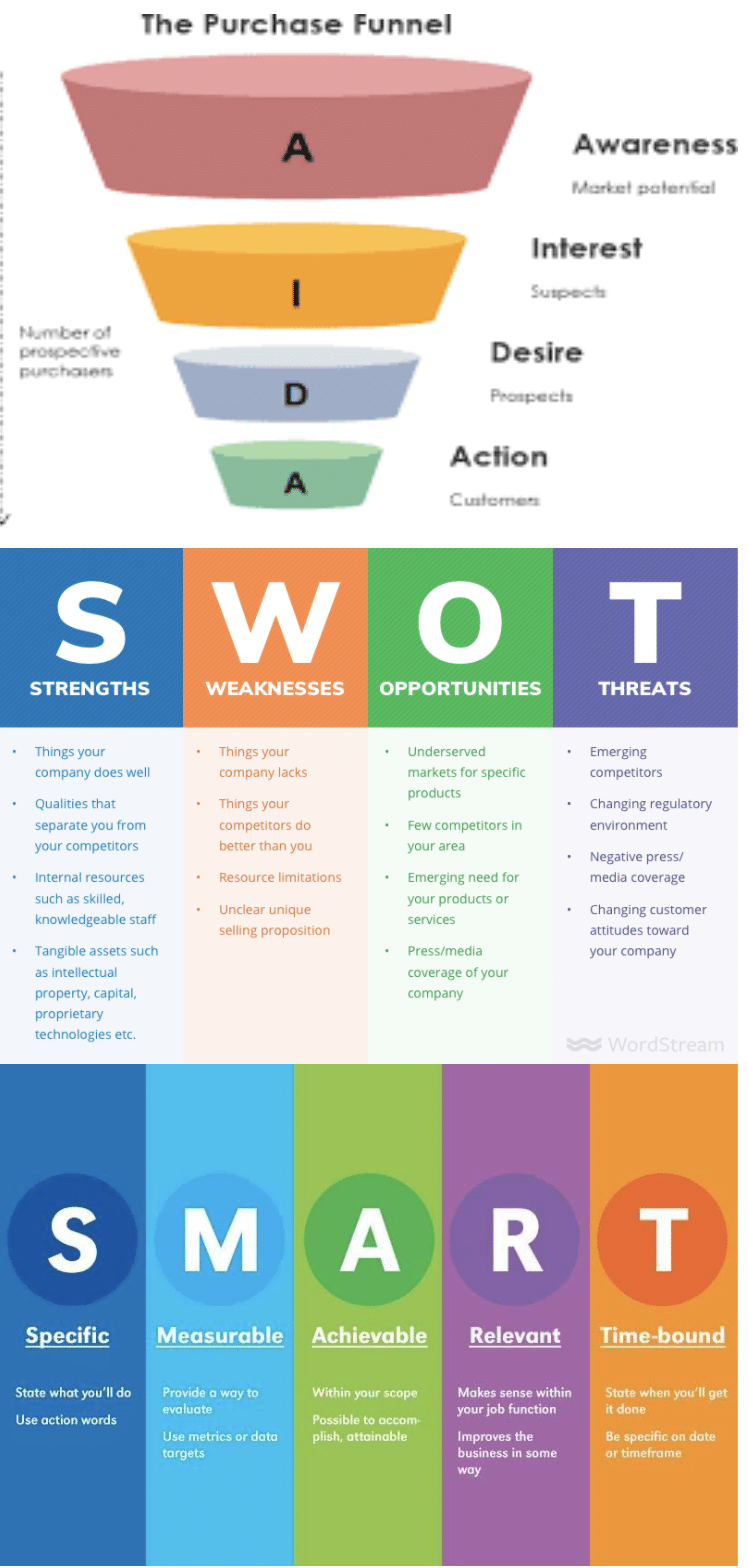Revising, upgrading, and rethinking your marketing plan yearly is just as important as your yearly checkup.
Just like you or any human, we try to go to a medical checkup and evaluation of our health once a year and hopefully throughout the year if we get ill or any other issue. Yet is does help to go to a check that way though out the year we just do quick evaluations. This same sicarios is very relevant to your brand or business, you should try to evaluate it yearly, do some checkups, maintained, comparable, checks and balances, also most importantly update that Marketing Plan on a yearly basis. First let’s review the steps how to do a Marketing Plan in the first place and how to organize it as well. Also providing ideas how to upgrade it and take it up a few notches from where it currently is right now or add anything you possibly have missing.
The Marketing Plan
How to organize a marketing plan can be tedious but very necessary, determine first your scope of the plan is it a Macro Marketing Plan or Micro. Macro is larger scale where you determine multiple sub-marking team and functions. Micro marketing plan only one team / function or focus one segment area. It also can be a Strategic which are long-term, high-level goal and increase awareness and market share or Tactical which is shorter term, closer in goals to increase profits or a specific profit.
The content for your marketing plan, and hopefully you have one in place and has good results and ROI, if not here is an idea for the organization for a new plan or a much-needed upgrade:
Part 1: Executive Summary: Mission/Vision Statements, Objectives, and Goals, Value Proposition, great to add here is possibly an AIDA Chart which is so important to express your brands customer journey, here is the idea:
Awareness: Consumer becomes aware of your category, product, or brand usually through advertising
Interests: Consumer becomes interested by learning about brand benefits & how the brand fits with their lifestyle.

Desire: Consumer develops a favorable disposition towards the brand
Action: The consumer forms a purchase intention, shops around, engages in trial or makes a purchase
Part 2: Marketing research: Industry/SWOT/ Buyer Persona, Brand Awareness/Equity (if you have any)
Important to collect research about your brand and one way to do this that will help organize is a SWOT analysis from this research. Some of this research can be your own analysis of your brand and an understanding from your customers. This is what you will be collecting:
Strengths: Things your company does well and all the assets
Weaknesses: Areas to improve upon
Opportunities: External factors that may contribute to your organization and can build up strength
Threats: Potential problems caused by external factors that your organization may face
Part 3: Strategy: Segmentation, Marketing Mix, Budget, Timeline, KPI/SMART and timeline
S (Specific) SPECIFIC
M (Measurable) MEASURABLE
A (Achievable) REACHABLE
R (Relevant) RELEVANT
T (Timely) OPPORTUNITY Bounded In Time
Part 4: Marketing Budget: Self-explanatory and possibly the best indicator of results to measure from year to year
Part 5: Execution: At least the fun part .. Development Creative, Test, Launch
Part 6: Analytics: Evolution/Monitoring
Determining Your Brand’s Health
Tips on how to update your marketing plan:
A strong brand is the one of the most important aspects of a company’s success. It helps the organization sell better, attract the right talent, and grow profitably. Understanding your brand’s health is, therefore, crucial for you and your marketing department to find out if the business is moving in the right direction and take measures to adjust to your growing or changing customer needs.
Brand health measurement can be approached in a variety of ways, loyal consumer surveys and interviews being most common, or quantitative or qualitative research done digitally as well.
No matter the approach, the following factors are crucial to ensure that you’re measuring your brand’s health against the right research information.
Here are a few tips for Improving your Brand Health:
1. Determine a clear Mission and Vision statements:
- Mission Statement: A statement that describes the company’s objectives and its approach to reach those objectives. The mission statement is the core purpose of the business. The statement represents the company in front of the world.
- Vision Statement: A short statement that depicts the company’s aspiration for the future position of the company. A declarative statement that defines the company’s long-term plans for the future.
2. Know your competition
A brand’s competitive position is a major factor impacting its brand health. Identify the direct and indirect competitors, their strengths and weakness, geographic presence, network strength, business and market share by value.
3. Brand Usage
Understanding a brand’s usage helps a company realize its standing in the market. Apart from getting an idea about the consumers’ purchase behaviors and preferences, the study also indicates the brand’s market share.
4. Brand Attributes
This part of the study simply checks whether the brand works with the customers’ expectations and how well their needs are fulfilled. Every brand strives to maintain a positive impression about itself in the minds of the customers. Ask yourself the question about your brand, does your brand have Value Proposition, which is why a customer should buy from you? It also refers to the value a company promises to deliver to its customers should they choose to buy your product or use your services.
5. Purchase Intent
Measuring the likelihood of purchase is an important part of the brand health survey. Your loyal clients/customer should give you reason for their purchase and feedback to their intent. This and the research form your competition should determine your USP your brand’s Unique Selling Proposition. It’s a position your brand or business takes that can be incorporated into your products, your brand, the experience you provide, and any other touch point your customers have with your business.
6. Continuous measurement is key
Systematically implement brand health analyses is crucial to the company’s success. It allows you to see the improvement or decline in these ways mentioned above on a regular basis and take corrective actions in a timely manner.
Also, continuous monitoring is critical, because just as they say exercising and good eating habits keep the doctor way. In this instance, the importance to measure brand health on even a monthly basis, or quarterly, and semi-annual or annual basis to monitor the brand to keep it in the best shape against the competition and to keep your brand equity.
References:
- https://hawkpartners.com/market-research/5-ways-to-keep-your-brand-health-tracker-fresh/
- https://awario.com/blog/brand-health/
- https://www.netscribes.com/measure-brand-health-against-the-right-metrics/
- https://www.managementstudyguide.com/brand-health-survey.htm
- https://www.netscribes.com/solutions/market-intelligence/competitive-intelligence/
- https://www.shopify.com/blog/unique-selling-proposition
- https://brand24.com/blog/how-to-conduct-a-brand-health-check/








Recent Comments